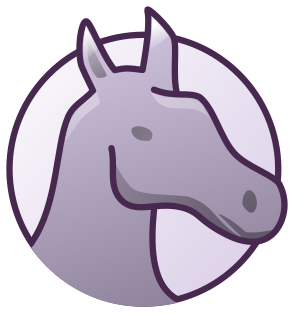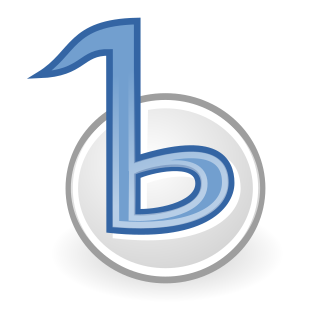
The Dublin Core, also known as the Dublin Core Metadata Element Set (DCMES), is a set of fifteen "core" elements (properties) for describing resources. This fifteen-element Dublin Core has been formally standardized as ISO 15836, ANSI/NISO Z39.85, and IETF RFC 5013. The Dublin Core Metadata Initiative (DCMI), which formulates the Dublin Core, is a project of the Association for Information Science and Technology (ASIS&T), a non-profit organization. The core properties are part of a larger set of DCMI Metadata Terms. "Dublin Core" is also used as an adjective for Dublin Core metadata, a style of metadata that draws on multiple Resource Description Framework (RDF) vocabularies, packaged and constrained in Dublin Core application profiles.

Anjuta is an integrated development environment written for the GNOME project. It has support for C, C++, Java, JavaScript, Python and Vala programming language.
GNOME-DB is a database application by the GNOME community. The project aims to provide a free unified data access architecture to the GNOME project for all Unix platforms. GNOME-DB is useful for any application that accesses persistent data, since it now contains a data management API.
ScrollKeeper is a document cataloging system. It manages documentation metadata, as specified by the Open Source Metadata Framework (OMF). ScrollKeeper was used by the GNOME desktop help browser, Yelp, but has since been replaced by Rarian. It was also used by the KDE help browser and ScrollServer documentation server.

OpenEmbedded is a build automation framework and cross-compile environment used to create Linux distributions for embedded devices. The OpenEmbedded framework is developed by the OpenEmbedded community, which was formally established in 2003. OpenEmbedded is the recommended build system of the Yocto Project, which is a Linux Foundation workgroup that assists commercial companies in the development of Linux-based systems for embedded products.

Eye of GNOME is the official and default image viewer for the GNOME desktop environment, where it is also known as Image Viewer. There is also another official image viewer for GNOME called gThumb that has more advanced features like image organizing and image editing functions.
The Extensible Metadata Platform (XMP) is an ISO standard, originally created by Adobe Systems Inc., for the creation, processing and interchange of standardized and custom metadata for digital documents and data sets.

Accessibility Toolkit (ATK) is an open source software library, part of the GNOME project, which provides application programming interfaces (APIs) for implementing accessibility support in software.

GNOME Keyring is a software application designed to store security credentials such as usernames, passwords, and keys, together with a small amount of relevant metadata. The sensitive data is encrypted and stored in a keyring file in the user's home directory. The default keyring uses the login password for encryption, so users don't need to remember another password.

Banshee is a cross-platform open-source media player, called Sonance until 2005. Built upon Mono and Gtk#, it used the GStreamer multimedia platform for encoding, and decoding various media formats, including Ogg Vorbis, MP3 and FLAC. Banshee can play and import audio CDs and supports many portable media players, including Apple's iPod, Android devices and Creative's ZEN players. Other features include Last.fm integration, album artwork fetching, smart playlists and podcast support. Banshee is released under the terms of the MIT License. Stable versions are available for many Linux distributions, as well as a beta preview for OS X and an alpha preview for Windows.

GNOME Commander is a 'two panel' graphical file manager for GNOME. It is built using the GTK+ toolkit and GnomeVFS or GVfs.

KDE Platform 4 was a collection of libraries and software frameworks by KDE that served as technological foundation for KDE Software Compilation 4 distributed under the GNU Lesser General Public License (LGPL). KDE Platform 4 was the successor to KDElibs and the predecessor of KDE Frameworks. KDE Platform 4 is the only version of KDE Platform, and in 2013 it was replaced by KDE Frameworks 5.
ContextObjects in Spans (COinS) is a method to embed bibliographic metadata in the HTML code of web pages. This allows bibliographic software to publish machine-readable bibliographic items and client reference management software to retrieve bibliographic metadata. The metadata can also be sent to an OpenURL resolver. This allows, for instance, searching for a copy of a book at a specific library.

Tracker is a file indexing and search framework for Linux and other Unix-like systems. It is written in the C programming language.
Quick Look is a quick preview feature developed by Apple Inc. which was introduced in its operating system Mac OS X 10.5 Leopard. The feature was announced at the Worldwide Developers Conference on Jun. 11, 2007.
NEPOMUK is an open-source software specification that is concerned with the development of a social semantic desktop that enriches and interconnects data from different desktop applications using semantic metadata stored as RDF. Between 2006 and 2008 it was funded by a European Union research project of the same name that grouped together industrial and academic actors to develop various Semantic Desktop technologies.
Strigi was a file indexing and file search framework adopted by KDE SC. Strigi was initiated by Jos van den Oever. Strigi's goals are to be fast, use a small amount of RAM, and use flexible backends and plug-ins. A benchmark as of January 2007 showed that Strigi is faster and uses less memory than other search systems, but it lacks many of their features. Like most desktop search systems, Strigi can extract information from files, such as the length of an audio clip, the contents of a document, or the resolution of a picture; plugins determine what filetypes it is capable of handling. Strigi uses its own Jstream system which allows for deep indexing of files. Strigi is accessible via Konqueror, or by clicking on its icon, after adding it to KDE's Kicker or GNOME Panel. The graphical user interface (GUI) is named Strigiclient.
AppStream is an agreement between major Linux vendors to create an infrastructure for application installers on Linux and sharing of metadata.

GNOME Software is a utility for installing applications and updates on Linux. It is part of the GNOME Core Applications, and was introduced in GNOME 3.10.

GNOME SoundConverter is an unofficial GNOME-based free and open-source transcoder for digital audio files. It uses GStreamer for input and output files. It has multi threaded design and can also extract the audio from video files.










